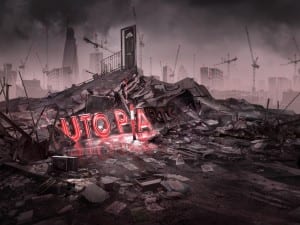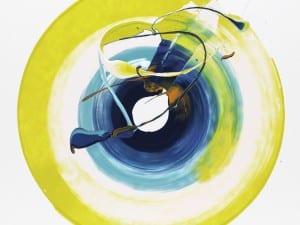In the 20th century, filmmakers and artists separated. At one time, filmmakers and artists were considered, one and the same, but as the century progressed the two disciplines moved further apart. With Hollywood dominating our cinemas, the Independent Cinema Office (ICO) has recently launched a new programme that supports artists’ filmmaking, and brings new works as well as great classics back to the public domain.
Bringing the “art” back into the art house, the Independent Cinema Office (ICO) launched the UK release and national tour of ICO Essentials: The Secret Masterpieces of Cinema at the Tate Modern on 18-21 January 2008, and it is now on national release at London’s ICA before hitting the road across the country.
The programme is comprised of six themed compilations of over 40 artists’ films, featuring rarely-seen works, newly restored material and classic titles, that have blazed a trail through the visual arts, fashion, music and design. Drawing on a wide range of practices from across the world, the ICO’s Essentials programmes present revelatory and groundbreaking works, many screening on restored material, including brand new prints and re-mastered work for High Definition (HD), which have influenced countless artists and films throughout the 20th century.
Six emerging young curators, including: George Clark, Ian White, Michelle Cotton, James Harding, Tanya Leighton, and The Otolith Group (Kodwo Eshun and Anjalika Sagar) selected the programme. Each Essentials collection takes a different thematic approach, offering a fresh new perspective on artists’ filmmaking, from topical and aesthetic preoccupations, to the roles played by technology, history, politics and wider cultural practices. Titles include: Dreams to Modernity, Expression, Protest, Play and Pop, each programme explores the influence and development of the artist’s film and its creative and social contexts.
The ICO was established in July 2003, and is a national organisation that aims to develop and support independent film exhibitions throughout the UK. One of the main aims is to work with varied screening spaces from multiplex arts centres with various screens to rural cinema and film festivals. The ICO also look at what cultural cinema could mean and how to create sustainable models for a range of different films in diverse venues.
George Clark, ICO Artists’ Moving Image Development Officer, takes the role of addressing the division between cinema and art. George, also the curator of the collection’s first individual release Dreams, comments, “The aim of this project is to compel cinemas to rethink film, what they offer and encourage venues to diversify the type of films that they show.“ Cinema has always flirted with the fantastic and as such, Essentials: Dreams offers a programme uniting the mythic, the nightmarish and the psychedelic, to present pioneering artists’ visions revealing cinema in all its magical intensity.
In recent years, the gallery community has gained from the ever-growing use of moving image and video work, which has ultimately generated the availability of varied disciplines under one roof. This has created a dialogue not only between different artists but also different forms of art. Yet, this benefit to the artistic community has created an equally tragic loss to cinema venues and further cements the division between cinema and art. Artist’s film in its current format faces many challenges for the traditional or industrial format. Ian White, one of the Essentials curators, says, “The model of industrial cinema doesn’t fit artists’ work. In using self-expression to undermine traditional views of gender, sexuality and class, my project has been to construct something different from the industrial cinema circuit, because unless independent cinema begins to adapt then galleries are to remain the likely guardians of these works.” His collection, Expressions, considers works that are political, but also pieces that utilise the self as a model for social and cultural resistance.
The Essentials programme sets out to articulate the ways in which the artist’s film, often viewed as obscure, impenetrable or intellectually elitist, has historically made an impact on culture at large, regularly responsible for initiating ideas and aesthetic practices subsequently taken up by more mainstream and popular culture. The current renown of artists’ film work is widespread, shown everywhere from the Turner Prize to television, in cinemas, to large-scale outdoor installations, with some of the most exciting feature films of recent times coming from visual artists, including Miranda July’s Me And You And Everyone We Know and Matthew Barney’s Cremaster and Drawing Restraint cycles and Douglas Gordon & Philippe Parreno’s popular hit Zidane.
The programme is also designed to cover a broad thematic spectrum from the 1920s to the 1990s. Essentials links disparate periods of the last century while restoring the independent nature of cinema packaged and tailored for the mainstream. Highlights include Luis Buñuel and Salvador Dali’s Un Chien Andalou and Jan Svankmajer’s Dimensions of Dialogue and an assortment of works by Andy Warhol, Peter Whitehead, George Kuchar, and Kenneth Anger. By successfully demonstrating that film is exuberant, flamboyant and inventive, the ICO advocate cinema as an exhibition platform for artists’ work.
Despite the contemporary importance and acceptance of film-based artistic practice, and its pervasive presence and re-appropriation across mainstream visual culture, from Franz Ferdinand music videos to advertising for Honda, from feature films to fashion design, the role of the visual artist within cinematic history has often gone undervalued and unseen. ICO Essentials sets out to re-address the balance.
ICO Essentials: The Secret Masterpieces of Cinema toured throughout the UK in 2008.
www.icoessentials.org.uk | www.independentcinemaoffice.org.uk
Alice Roberts





